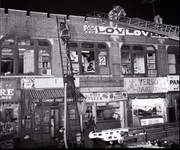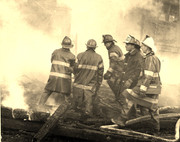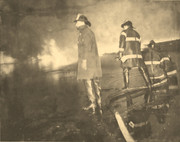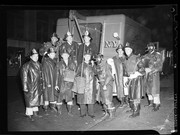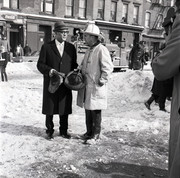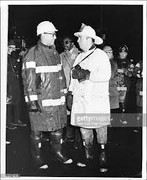Looking at some of these pictures today, it seems just "So Antique". But it was very sadly a lesson learned after the deaths of THREE FDNY Firefighters from Ladder Co 5, who suffered some very serious burns while operating at a fire on Watts St in lower Manhattan.
I remember the words of the Youngest member at the time, I think Probationary Firefighter Jimmy Young as he was being placed into the ambulance that night. He said; "if I don't make it, just tell everybody that this is still the Greatest job in the world". Those words headlined every newspaper that covered the story.
The Captain of Ladder 5, Capt John Drennan, suffered with very serious burns for 40 days before he passed away. I remember the late Lt Jimmy Curren talking briefly about it at a training seminar given at "the Rock". Lt Curren had said that he had received "Fourth degree" burns, which he described as burns into the bones.
As I remember, it was after that fire that the FDNY decided to change to bunker gear. And bear in mind that I know of NO OTHER larger City in the northeast, except maybe Philly (?), which was using Bunker Gear.
Before buying Bunker Gear for the entire dept, the FDNY tried several types with some of the busiest companies in the city. Facts were gathered on the results and the decision was made on which bunker gear to buy for the entire dept.
After that serious incident and the FDNY decided to go to bunker gear, most every other city in the entire northeast followed their example. I remember as a firefighter in Connecticut, it was agreed upon by both the firefighters union and the city, in the written contract, that the city would provide such bunker gear to all of the firefighters.
I'm sure most guys who worked with a rubber or canvas coat, and three quarter rubber boots, would tell you how much easier it was to move around and do the job. But we now know, because of what happen in the case of this serious Manhattan fire, the bunker gear used today is so much safer than what was used then. No doubt many firefighters lives are saved today throughout so many cities because of the Supreme Sacrifice that these Three FDNY Members had to pay. And because the FDNY was willing to do what they could to prevent this from ever happening again.

